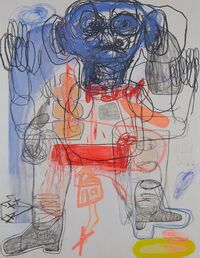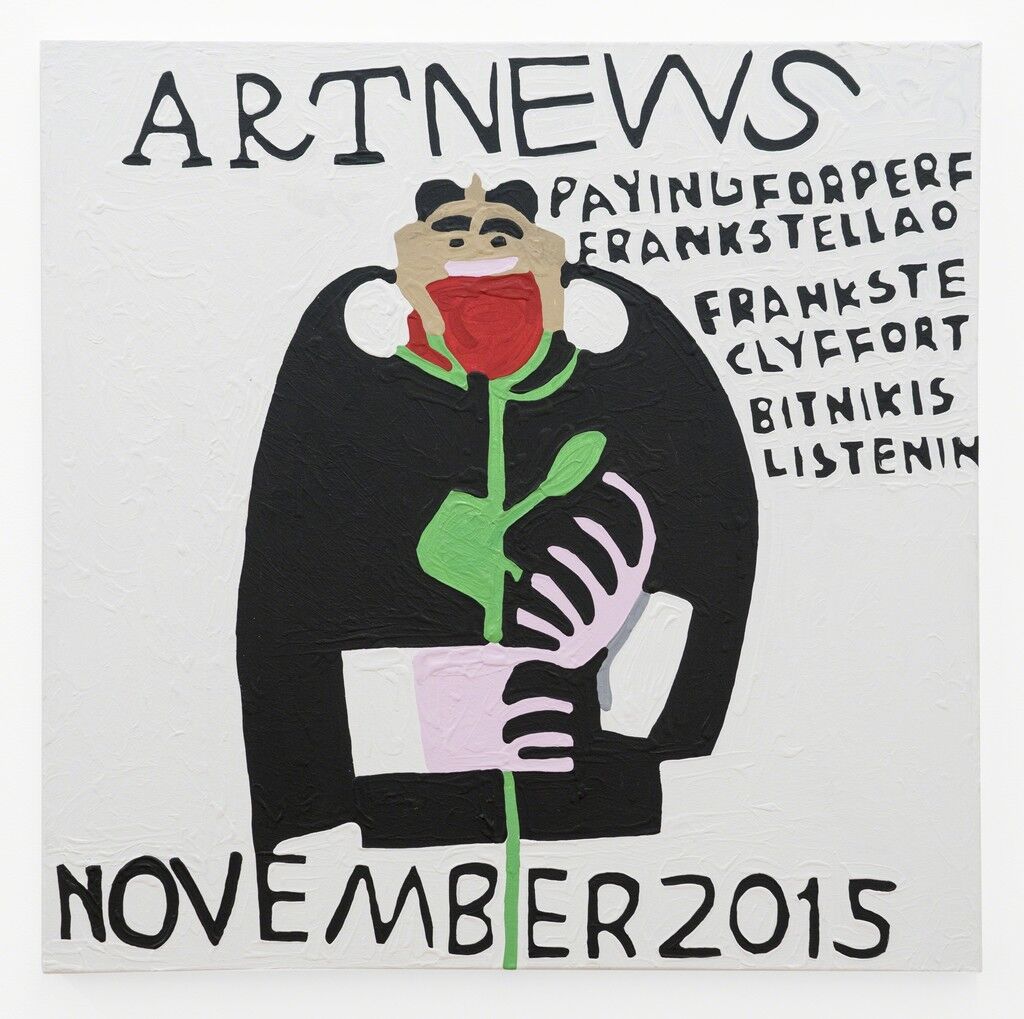Why Outsider Art Is a Problematic but Helpful Label


artsy_what makes someone truly an outsider? Is it a question of attitude, access, opportunity? Does it simply mean a certain rebellious streak, an aversion to the mainstream? When it comes to the art world, the term “outsider” has a tumultuous history, and it’s still liable to set off long debates. And yet, despite occasional detractors, “outsider art
” is more or less accepted terminology—a way of describing a certain kind of creative output that resists tidy boundaries.Dealers and experts commonly refer to Jean Dubuffet, who in the 1940s collected and championed work under the umbrella term Art Brut
(roughly, “raw art”). And certainly, most people since then have a preconceived notion of what outsider art entails, which might include the art of those with disabilities or mental health conditions, as well as gloriously eccentric work made in isolation, with little hope for fame and fortune.
“It’s not that the definition has changed, but that the context has changed,” according to New York gallerist Andrew Edlin, who owns the Outsider Art Fair (whose Paris edition opened on Thursday). By that, he means that major institutions and art world events, like the Venice Biennale, have increasingly presented work that was once ghettoized. The market has also taken notice, and the success of the Outsider Art Fair is just one indicator. Christie’s had its best-ever sale of outsider and vernacular art in January, bringing in $4.2 million and setting a new auction record for the work of canonical outsider artist Bill Traylor
. Still, the market maintains a complex relationship with the outsider label for various reasons, some of them financial.
What’s in a name?
jean Dubuffet Site aléatoire avec un personnage, 1982
Opera Gallery
“I’ve seen contemporary art dealers who show self-taught artists, and work that’s been part of the outsider canon, and they try to distance themselves from the term—because they are so deeply vested in the contemporary art conversation,” Edlin said. “They think outsider is uncool and they are liberating the work in some way. Of course, the art holds up in any arena or institution, but some tend to exaggerate connections between work that is, for the most part, not influenced by the canon, and work that is. They think this helps to ‘validate’ outsider art, which is, of course, nonsense. In other cases, it’s just a sales technique.”
Edlin summarized one definition of outsider art as being that which is “made by untrained artists, that’s not academic or influenced by art-historical references.” That’s a helpful foundation to build on. But however easy it is to use outsider art as a shorthand for a type of liberated and unpretentious making, there are still gray areas to consider, he said. For instance, how plausible is it to escape the influence of other artists in this day and age? Does having any formal training disqualify one from being identified as an outsider?
One thing that’s clear is that outsider status is not something that can be borrowed or faked; it’s not a mantle that can be donned when it’s convenient, though that certainly doesn’t stop artists from trying. Outsiders are “making work that is an extension of who they are and what they’ve been through,” Edlin said. “It’s not about trying to please their dealer, the press, the curator, or their classmates.”
That can get confusing, of course, because all artists make work reflecting their personal experiences, even the ones who received MFAs from Yale. Perhaps it ultimately comes down to artists’ outlooks and intentions—or, rather, a lack of intentions.
Outsider influencers
Henry DargerUntitled, n.d.
Andrew Edlin Gallery
“Contemporary artists are the biggest flag-wavers for outsider art,” Edlin said, approvingly. “It reminds them of their early, un-self-conscious years, when they were just kids, making art, and didn’t have a career in mind.” He mentioned a 2008 show at the Folk Art Museum, “Dargerism: Contemporary Artists and Henry Darger,” which highlighted artists (like Trenton Doyle Hancock and Turner Prize winner Grayson Perry) who have an affinity for the drawings of outsider art star Henry Darger
. “That doesn’t mean they’re becoming outsider artists—far from it,” Edlin added. “It’s just another part of their influences.”
None of this has to boil down to dogma, though. Part of what makes outsider art interesting in 2019 is how fluid it can seem. For instance, consider Marlon Mullen
, who works at the Bay Area’s NIAD Art Center, which is dedicated to supporting artists with disabilities, and has shown at the Outsider Art Fair. At the same time, Mullen is on the roster of ultra-hip New York gallery JTT, which also represents artists like Borna Sammek and Jamian Juliano-Villani
. Mullen’s paintings, which appropriate imagery from art magazine covers, were also included in the 2019 Whitney Biennial, one of the art world’s tentpole events; it’s hard to imagine a more mainstream anointing.Meanwhile, the actor Jim Carrey had his political cartoons exhibited at the 2019 Outsider Art Fair in New York. Can a man so famous for his work in one creative field be considered an “outsider” in another? While Edlin has firm ideas of what constitutes outsider art, he’s also aware that sticking to rigid definitions can be a fool’s errand: “How purist do we want to be about these things?”
Ike MorganUntitled Bird, 2019
Webb Gallery
Ike MorganUntitled Bird, 2019
Webb Gallery
Anyone looking to ponder and complicate their own ideas of outsider art would do well to visit “Garden,” a collaborative exhibition organized by Shrine and Sargent’s Daughters in New York. The show jumbles together work by trained “insider” artists (like Josh Smith, who is represented by blue-chip gallery David Zwirner) with that made by individuals more often associated with the outsider art category. For instance, a sloppy, wild painting of the Star Wars character Yoda by School of Visual Arts MFA grad Katherine Bernhardt hangs near an epic, tapestry-like canvas by Ike Morgan
, an outsider artist based in Austin, Texas. The point of “Garden” isn’t to do away with these distinctions, nor to undermine the validity of the outsider term itself, as noted by Scott Ogden, co-curator of Shrine. Instead, the exhibition offers an opportunity for dialogue across categories. “I definitely do not see ‘outsider’ as a style, or a way of working, in art,” Ogden added.
 Outsider Art Fair, Paris 2019
Outsider Art Fair, Paris 2019
And, at least for Ogden, simply being unschooled or self-taught isn’t the determining factor, either. “Self-taught artists might avidly visit museums, read art books, interact with well-known artists, or Google useful art-making techniques,” he said. “A true ‘outsider artist’ would more than likely not do these things, and would instead rely on their intuition and inventive nature when creating artwork. With the current state of technology, it feels increasingly hard to find individuals with a distance from the popular world and dominant cultural trends, with little to no awareness of art history.”
Manchester-based dealer Jennifer Gilbert, who organizes pop-up shows under the name Jennifer Lauren Gallery, is showing at the Paris edition of this year’s Outsider Art Fair. When discussing the field, she tends to privilege terms other than “outsider”—like “evolving,” “overlooked,” or “undiscovered.” Part of her definition of the field includes “art that is created without an audience in mind” and work “created under circumstances that the artist may not have chosen.” In general, she said the “outsider” label has been stretched to the point of uselessness.
Time to throw out “outsider”?
Marlon Mullen Untitled, 2017
Adams and Ollman
“It’s now become an almost umbrella term for any art made by a person outside the mainstream,” Gilbert said, reserving specific ire for the overuse of the #outsiderart hashtag on social media. This apparent flexibility has also led to more than a few unsolicited pitches from artists who want to self-identify as outsiders, simply because they haven’t yet gained a foothold in the mainstream. “I do get people contacting me who have just graduated and find it hard to get gallery representation…people with work that they say galleries find hard to understand, or that’s a bit ‘out there,’” Gilbert said.
So in 2019, you might well find MFA grads who want to somewhat cravenly market themselves as “outsider” artists, as well as self-taught artists who might balk or take offense at the term. Such confusions have led some to call for abandoning the label entirely, but it has, in many ways, become part of the shared culture.
“As much as the term has been debated, when you say ‘outsider art,’ people know what you’re talking about,” Edlin asserted. In contrast, he alluded to how befuddling it can be when clunkier language is used, as was the case with the recent traveling exhibition “Outliers and American Vanguard Art.”
Likewise, Ogden of Shrine still finds the term “useful and relevant,” despite its slipperiness. It’s a way, he said, of “distinguishing artists who embody completely unique artistic systems.”
In the end, somewhat frustratingly, there’s no easy way to dictate or define what constitutes outsider art. To borrow from those I spoke to, it’s “wholly self-created,” “extremely idiosyncratic,” “raw art produced by non-professionals,” and resolutely “non-conformist.” Ogden quoted the late art dealer Phyllis Kind, who said that “there is just something different about these artists and their creations.”
We might do well to worry less about distinctions between labels. “The ultimate thing that matters is: Is it great? Is it compelling? It is interesting?” Edlin said. “What you call it is completely secondary.





